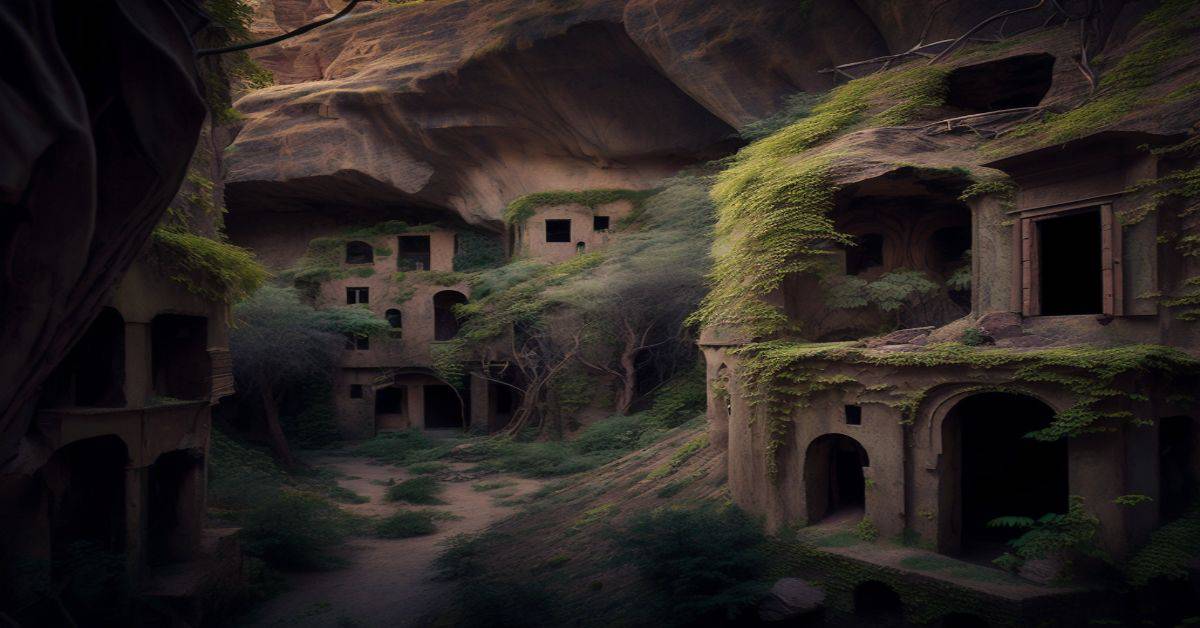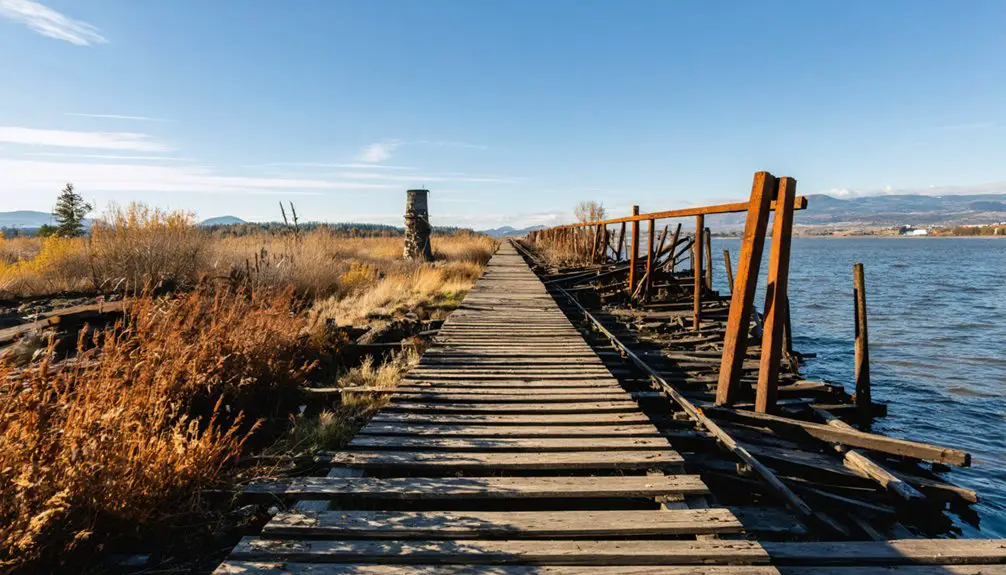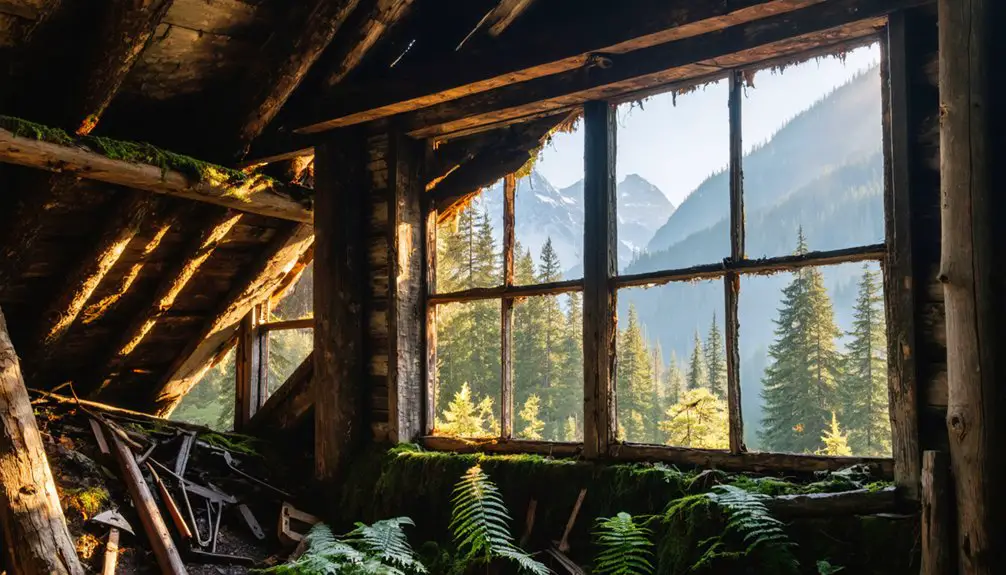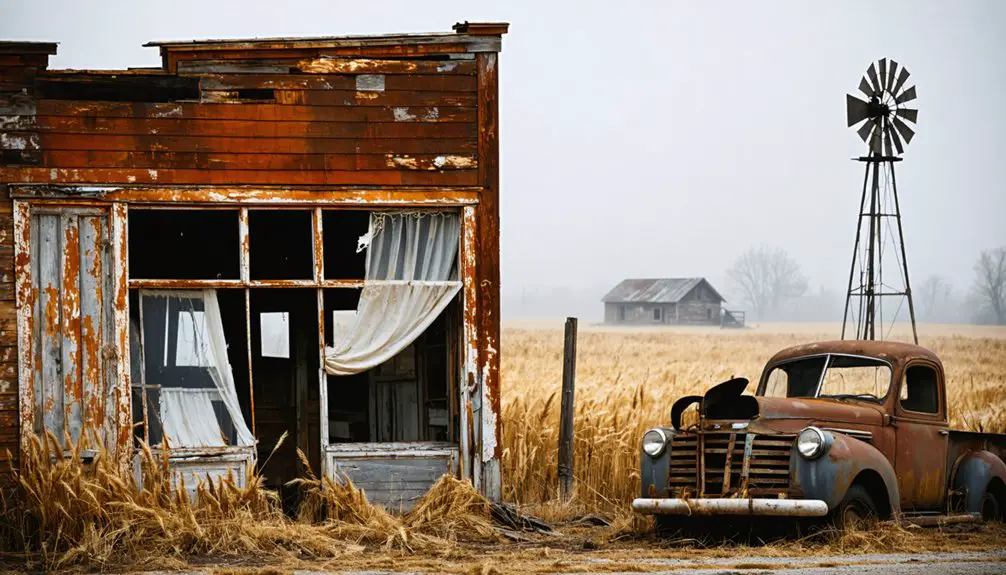Washington state joined the United States on November 11, 1889. It was the 42nd state to be added to the union.
There are 151 ghost towns in Washington. The state covers an area of 71,362 square miles leaving plenty of room for more ghost towns to be added to the list as they are discovered.
Present-day Washington has six national forests, 215 state parks, and five active volcanoes: Mt. Baker, Glacier Peak, Mt. Rainier, Mt. Adams, and Mt. St. Helens. Before the state became what it is today, Washington was filled with miners, loggers, and railroad workers, laying the way for the future.
As mining and logging operations were exhausted, workers would relocate to other areas where work was available. Towns that once flourished with life started to disappear, only to be remembered through memories and stories. Some towns were demolished and lost to nature, while others were deserted and fell to ruins.
Melmont, Washington
Established in 1900, this coal town of Melmont is located towards the far south end of Carbonado, close to the Mount Rainier National Park. This town was fully functional, with shops, saloons, grocery stores, train stations, and more during those times. Most of this town’s inhabitants were Northwest Improvement Company employees co-owned by the Northern Pacific Railroad.
However, in 1918, diesel and electric engines started replacing steam engines. As a result, the coal factories’ people had to move to other places for work. Natural calamities like fires, snow, and rain destroyed this place gradually. Today, you can spot remnants of some former buildings and a hiking trail.
Coal Creek Trail, Washington
This trail can be accessed easily and is located quite close to the Cougar Mountain Regional Wildland Park. As the name suggests, this trail consists of many town hubs of coal mining operations from many years ago. Today, the place is replete with dilapidated buildings such as railway beds, mines, hotels, etc.
Monte Cristo, Washington
Considered one of the most famous ghost towns in Washington, Monte Christo is one of the abandoned spots you can access through a challenging hiking trail. This town’s history goes back to the 1890s when silver-ore mining was an important activity in the area.
However, the city remained in its busy state for only nearly two decades. The silver-ore mining business gradually halted, and people started leaving for better working prospects in other mines. The traces of old buildings and structures can still be found here, giving you a fair idea of the living style that existed during the town’s peak.
You can reach this hike through Barlow Pass, located off Mountain Loop Highway. Take note of the broken-down buildings and ancient towns.
Govan and Sherman, Washington
Located on Highway 2, just towards the south of Grand Coulee Dam, Govan is an abandoned yet thrilling ghost town you would not want to miss. This small town was established in 1890, in Lincoln County, as a farming hub.
In 1902, Govan was in the news after one of the most gruesome murders ever committed in the area happened in town – the twin murders of Judge JA Lewis and his wife, Penelope. In 1927, a devastating fire damaged Govan and shut down most businesses. Today, you can see some intact buildings, such as grain silos used for shipping, post offices, etc.
Situated just 15 miles away from Govan is Sherman. This was a popular city in its time. A look around the town will show the ruins of a church, schoolhouse, and cemetery.
Bodie, Washington
Bodie is one of those few ghost towns in Washington where the buildings and possessions are preserved well. The town was named after Bodie Creek and the Bodie Mining Company that operated mines nearby.
Bodie was highly popular between the late 1880s and early 1900s because of the gold discovered here. However, by 1917, the mines were exhausted, and Bodie lost its sheen. Unlike other ghost towns, Bodie does not look deserted.
On the contrary, you will find beautiful wooden buildings on the sides of Toroda Creek Road. Today, these buildings are part of private properties, and visitors are not allowed to enter them.
Chesaw, Washington
Located about 25 miles towards Orville’s east, Chesaw is one of the many ghost towns in Washington that was built around rich mining centers. Named after a Chinese miner, Chee Saw, this town was quite popular in the early 1900s when placer gold was discovered.
Commercial establishments like hotels, saloons, blacksmith shops, stores, and other facilities were constructed during the early 1900s. As the town’s popularity started waning, Chesaw started losing its residents. Today, only about ten people live here.
Nighthawk, Washington
Considered to be one of the earliest mining areas in Washington, Nighthawk is located within a 30-minute distance from Loomis-Oroville Road. It is believed that mining started here in the 1860s, and the town was buzzing with over 3,000 inhabitants.
However, as the mining business reached a standstill, the townspeople started moving to other locales. Today, you can find a lonely hotel, brothel, and mining structures standing amongst the ruins of Nighthawk.
Molson, Washington
Located on the Canadian border, about 30 minutes from Chesaw, sits what is left of Molson, Washington. It is far more organized than other ghost towns and will give visitors a one-of-a-kind look at what life was like in the former town.
George B Meacham and John W Molson developed this city in 1900 when they uncovered its mining potential. When the mining operations were at their peak, this town had close to 300 inhabitants. A hotel, blacksmith store, general store, and saloons were constructed to accommodate residents.
When the mining industry’s boom ended, and people started leaving, Molson’s structures were converted into an open-air museum. Visit this museum to learn more about the schoolhouse and other buildings in the town years ago.
Triangle of Fire
Fort Flagler, Fort Casey, and Fort Worden are known as the Triangle of Fire. This triangle is considered a ghost town, as businesses stopped flourishing here more than 100 years ago. The main aim of these three forts was to protect the region’s shipping lanes.
They can be found close to Coupeville and Port Townsend towns and are easily accessible. These forts make for great weekend trips filled with old buildings, beautiful walking trails, and beaches. Today, it is necessary to purchase an entrance pass to walk through the forts.
Copper City, Washington
Located in a dense forest region between the east of Mount Rainier and Yakima, Copper City, like most other Washington towns, was a prominent mining town back in its heydays. This popular town started becoming a ghost town when mining began slowing operations as minerals were exhausted.
While you can hike for a short distance to find the schoolhouse’s remnants, a slightly longer route will lead to abandoned mines in the area.
Northern State Mental Hospital
Established in 1912, the Northern State Mental Hospital’s primary purpose was to reduce the burden of overcrowding patients at the Western State Hospital. However, in 1976, Northern State Hospital’s functions were severely impacted when the state Government stopped funding.
Though you cannot walk directly into the hospital today, you can hike along a 5-mile trail to look at the hospital’s recreation area in Sedro-Woolley. You will surely feel the goosebumps on your skin when you visit the hospital’s cemetery, as over 1,000 people were buried there.



